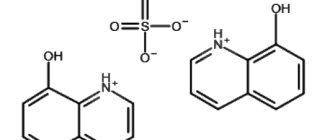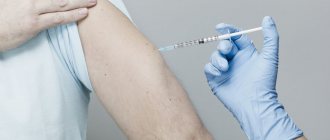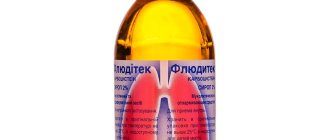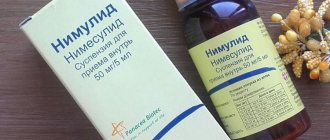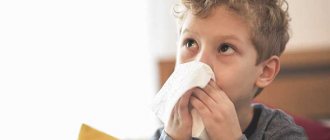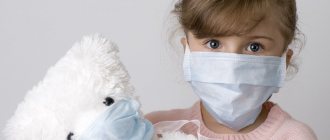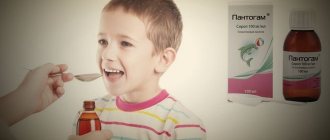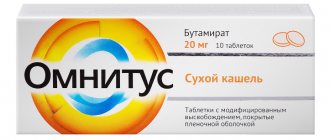Elidel cream is a local anti-inflammatory agent for the treatment of skin diseases, especially atopic dermatitis. The drug is intended for use in courses from 4 weeks to 12 months. With long-term use, it does not cause skin atrophy, does not affect the functioning of healthy cells, prevents relapses, and strengthens local immunity.
Compound
The active component is pimecrolimus with a pronounced anti-inflammatory effect. Excipients - citric acid, sodium hydroxide, benzyl, oleyl, cetyl alcohol, propylene glycol, purified water. The composition does not contain irritating, aggressive components or fragrances. The product is hypoallergenic and is intended for the care of hypersensitive, irritated skin.
Composition, release form, where to buy and price
Elidel for children, reviews of which are mostly positive, is available in the form of a 1% homogeneous white cream, which has a non-greasy consistency and is quickly absorbed into the skin.
The primary packaging is aluminum tubes with a capacity of 15 or 30 g, the secondary packaging is cardboard boxes. The drug is produced by the German pharmaceutical company MEDA PHARMA GmbH & Co.KG. It is not available in ointment form.
The main active component is pimecrolimus, a colorless soluble substance. Its content in 1 g of cream reaches 10 mg. This chemical compound belongs to the class of calcineurin inhibitors, ascomycin macrolactam immunosuppressants. Macrocyclic lactams are cyclic derivatives of ammonia.
Thus, the active substance is obtained synthetically. It has a unique structure and significant molecular weight, which gives the composition lipophilic properties.
The latter provide high affinity for the skin, due to which pimecrolimus penetrates through it approximately 100 times slower than corticosteroids. This allows you to avoid unwanted systemic effects and determines the selective (selective) effect of the drug only on the skin.
In addition, the drug contains the following excipients (their amount is indicated in brackets in mg per 1 g of cream):
- sodium hydroxide (0.2) - an intermediate compound used as a carrier in the production of the drug;
- anhydrous citric acid (0.5) – acidity regulator, preservative;
- benzyl alcohol (10) – preservative and solvent;
- sodium cetostearyl sulfate (10) – stabilizer, emulsion component;
- glycerides (20) – stabilizers;
- cetyl and stearyl alcohol (40 each) – skin softeners, components of ointment and cream bases;
- propylene glycol (50) – preservative and stabilizer;
- oleyl alcohol (100) – solvent;
- medium chain triglycerides (15) - synthetic fats to create a creamy base;
- purified water (569) – solvent.
The average price for the drug in the pharmacy chain is 810 rubles. for a tube of 15 g and 1310 rubles. for 30 years
pharmachologic effect
The active component of Elidel is a derivative of ascomycin. The substance stops the inflammatory process at the cellular level and prevents the exacerbation of relapses of atopic dermatitis.
The anti-inflammatory effect is comparable in strength to the glucocorticosteroid group hormone clobetasol. Pimecrolimus does not affect the functioning of the immune system, which reduces the likelihood of serious side effects. With long-term use, it does not thin the epidermis and does not lead to atrophy.
After application, the active components are absorbed by tissues and localized in pathological areas. They practically do not enter the general bloodstream and do not cause systemic reactions. The therapeutic effect occurs after a few days of active use, but already from the first day inflammation is noticeably reduced, itching, burning, and a feeling of tightness are eliminated.
Pharmacological properties of the drug Elidel
Pimecrolimus is a derivative of the macrolactam ascomycin. Selectively inhibits the production and release of cytokines and mediators from T lymphocytes and mast cells. Has anti-inflammatory properties. Pimecrolimus binds highly specifically to macrophilin-12 and inhibits the calcium-dependent phosphatase calcineurin. As a result, by blocking the transcription of early cytokines, pimecrolimus suppresses the activation of T lymphocytes. In particular, in nanomolar concentrations, pimecrolimus inhibits the synthesis of interleukin-2, interferon gamma (Th1 type), interleukin-4 and interleukin-10 (Th2 type) in human T lymphocytes. In addition, in vitro after interaction with the antigen/IgE-pimecrolimus complex, it prevents the antigen/IgE-mediated release of cytokines and inflammatory mediators from mast cells. Pimecrolimus does not affect the growth of keratinocytes, fibroblasts and endothelial cells. The drug combines high anti-inflammatory activity and a slight effect on systemic immune responses. When pimecrolimus is applied topically, its concentration in the blood is very low, so it is impossible to determine metabolic parameters. In vitro in human skin .
Is Elidel hormonal or not?
Most effective drugs for the treatment of atopic dermatitis contain a hormone from the group of glucocorticosteroids. The substance has a number of contraindications, can cause serious side effects, there is an age limit, it is not allowed to be used for more than 1 month by adults, 14 days by children. The main question that buyers ask when buying Elidel cream is whether it is hormonal or not.
The modern drug for the treatment of atopic dermatitis and allergic rashes of various kinds does not contain hormonal substances, but in terms of effectiveness and speed of achieving the desired result, it is in no way inferior. Due to the absence of dangerous components, the drug can be used for a long time.
Elidel during pregnancy
I finally decided to write. I understand that my story is very similar to many others. But suddenly, someone will need it.
I ate everything during pregnancy. I didn’t even think about such things as allergies, accumulative effects, pseudo-allergies... I didn’t drink coffee, of course, but I did allow myself McDonald’s.
In the maternity hospital I didn’t eat tomatoes (because they told me not to eat red ones. At that time I didn’t yet understand what they were talking about and how it could manifest itself), I didn’t eat cabbage (because it makes me bloat), and I didn’t eat sausages. But I ate a boiled egg, cutlets, my husband brought dried bread... In the maternity hospital, I was injected with antibiotics for 2 days: leukocytes were reduced (I could have refused - I didn’t think about it).
After the maternity hospital, I made hamster halva for 2 weeks (from the 2nd week of my daughter’s life). At the 3rd week, lactostasis occurred. I took 5 amoxiclav tablets... (I’m writing about antibiotics because I don’t know if they could provoke the rashes discussed below).
At the 4th week of my baby’s life, our cheeks began to turn red. Soon wild crusts formed. The pediatrician decided it was because of the halva. Then I read that seeds are a terrible allergen. I only applied bepanthen. We continued to bathe him in a baby bath in a string and chamomile. Gradually the crusts disappeared, leaving barely noticeable yellow pimples.
At the same time, I ate something else (now I understand that it was like cheese in butter): I ate fish, ate mimosa salad several times, ate all my mother’s baked goods such as muffins, pasta, cabbage soup, pasta soups with beef broth ( fortunately, I decided to give up chicken due to the fact that chickens are stuffed with antibiotics), bread of various types, green apples without peel, porridge with water + 0.5 milk, cottage cheese, sour cream, butter.
On December 1st, relatives came to visit us. My husband made pilaf... with sesame oil!!! (again, I found out all the allergens after a long time). We ran out of pilaf and decided to make miyeok-guk (Korean seaweed soup). I ate it before and during pregnancy. Of course, I doubted it a little, but my husband insisted that all Korean women eat it for a MONTH after giving birth to improve the quality of milk. Well, it’s over, I’m still that Korean. For 3 days I ate seaweed soup with SOY sauce (chemicals!!!). Another morning I wanted eggs... 2 eggs, a toast with butter and cheese...
And then in mid-December the condition began to deteriorate. Literally within 3 days the child turned sooooo red... On December 19th I start eating buckwheat. The next day, however, I started eating black bread. And plain water... Lasted until December 23rd. I brought in a rabbit. Fried with onions. I started hanging out on the forum looking for a solution to our problem. I called the local nurse. She advised to settle the bathing water, because... chlorine irritates the skin, and dermatitis loves water, I also recommended mash (tindol). I called a doctor to my house. The pediatrician looked at it and scolded me for the algae (if it was that, then the effect was only after 1.5 weeks). She prescribed: Uriage Pruised, Topicrem, Elidel, and in extreme cases, hydrocortisone.
I used cindol and bought Emolium P triactive cream for rough skin (because the dermatitis had spread to the body). Sometimes I dried it with fucorcin (it was necessary to compare the effect). For the bath I used emulsion Emolium P. By the end of December the situation was improving. On December 19th I started keeping a food diary. Closer to New Year's Eve, I began to eat pasta, broccoli/cauliflower, overcooked with onions. On New Year's Eve there was a rabbit stewed in sour cream sauce with onions, and buckwheat cookies (thanks to the diaries of girls with similar problems).
After New Year’s Eve, I decided to eat cheese (goat cheese, lactose-free oltermani, Reggiano Parmigiano...), drank goat yogurt, decided to try yeast-free bread, and ate corn porridge. In short, I introduced food again. Since January 6th things have gotten worse. I somehow didn’t attach any importance to it. And by the 10th I start eating buckwheat again. Buckwheat on water + black bread + water. The effect of my diet became visible only now, i.e. almost 3 weeks have passed!!!
But it wasn’t just the diet that helped me. Just 2 weeks ago, the skin on the body began to clear up, but on the face there was an achtung: if before the weeps could be smeared with cindol, then the crusts gradually fell off, but this time the weeps lived up to their name. My cheeks were so wet that they were dripping. It was difficult to spread anything on it. I applied cindol to a cotton pad, then glued it all to my cheeks with a band-aid (don’t do this!!!). It looks like there is an infection. Crusts appeared on my head. On the 17th I went to the local pediatrician. She showed photographs of her cheeks and body. The pediatrician’s answer: “Katyusha, why torture the baby. Switch to mixture, try it for a week. Strain and then resume.” She recommended Oxycort (aerosol).
She told me to make an appointment with a dematologist, an allergist... By that time, I had an insurance appointment with a dermatologist, an allergist and a gastroenterologist. And also to Smolkin at the NKCC. I read a lot of reviews about him.
Now the actual review of the doctors.
1) The local pediatrician is not a bad woman, but she admitted that this is a more specific problem and should be solved by an appropriate specialist.
2) The insurance pediatrician visited us on December 29th, when the situation was improving. I asked him about the tests. The answer is that they are not informative. Before that, we took a blood test. It turned out that our eosinophils were elevated (I think they were elevated, I don’t remember exactly). He advised me to drink suprastin - ¼ tablet either for 5 days or 5 times a day. We didn't drink. (We drank Finistil, but somehow I didn’t feel the effect. Most likely, you need to drink it longer. We drank it for 5 days)
3) Dermatologist with insurance (medsi). A young girl looked at us for 5 minutes. She prescribed pimafucort (hormonal, limited to children under 1 year of age). But I already agreed to do anything to avoid infection. Apply Elidel to the remaining rough spots (I didn’t feel any effect from it). Bath in a small bath for no more than 10 minutes, water no higher than 35 degrees. Leave the water to settle. You can use our emulsion Emolium P.
By the way, the effect of pimafucort was visible the very next day. But my daughter still manages to comb these places.
Already from January 21st improvements were visible. On the 22nd, I couldn’t hold back (I had a breakdown for 2 days... I didn’t even go out for a walk with my daughter... my head was spinning). And I decided to eat pasta with sunflower oil... I ate it in the evening. And in the morning I ate boiled lamb. By evening, the right cheek turned red and spots on the head turned red... Eshkin cat, what is there to sin??? (the answer is below, but I'm still not sure).
After reading on the forums, I began treating my cheeks with miramistin, then applying pimafucort.
4) Allergist-immunologist under insurance. She received us 30 minutes later, because... there were a lot of patients, I didn’t have time. I didn't look at my food diary. She said that she already sees that I carefully write everything down, but we don’t have allergies. Just an immature gastrointestinal tract. Mommy should eat a little bit of everything. Test total stool and stool for carbohydrates. If pimafucort helped us, it means we had an infection!!!!!!!!!
5) Gastroenterologist under insurance. Breastfeed while milk is available. Complementary feeding no earlier than 6 months. Drink bifidobacteria, donate feces. I should eat everything boiled, stewed: rabbit, broccoli...watch the reaction. Anya pooped right on the changing table. I asked if it was possible to get tested, so to speak, without leaving the place. The doctor gave the go-ahead. I scraped the feces from the diaper with a spoon and took it for a general analysis.
Question... I read that feces need to be submitted fresh - 3 hours maximum. At the same time, it is undesirable to collect it from a diaper/diaper, because maybe something else will come in. And a mother I know told me that they sowed Klibsiella in this way, and it almost turned grey. Then they told her how to do it correctly, they retook it, and everything was ok.
6) Smolkin. Somehow I expected more. I just read a lot about him. He didn’t look at my food diary (on the other hand, I should have suggested it to him myself). I mentioned pregnancy (I wanted to tell you what I ate), and then about childbirth and other antibiotics. He said that it didn’t matter what I ate there during B. He looked at Anechka, did a prick test for milk, wheat and eggs. As a result, egg 3+, wheat 1+, milk - the norm. I asked why I eat black bread, and the situation is getting better, there is wheat flour, and we have a reaction to it, albeit weak. He left the question unanswered. Perhaps this will come back to haunt me later when I stop using pimafucort... We'll see. Starting tomorrow I won’t eat bread (or better yet, I’ll ask my mom to make her own).
I wrote a list of prohibited foods: of course, everything that has a hint of egg and wheat, seafood (but you can fish...the one I ate while breastfeeding), no all spices such as coriander, black pepper, bay leaf. No mushrooms, nuts (oh, Gods, I ate them after listening to my mother). No green tea. Hard cheeses such as Parmesan and blue cheeses are not allowed (damn, I ate that Reggiano Parmigiano like the last time).
You can have all the porridges with milk and weak black tea. Meat. Questionable (more on my part) are chicken and turkey. Corn porridge is also questionable (since I once ate it all day and noticed a deterioration, but this was at the very beginning of our cleanse. Perhaps not because of it). All fermented milk - yes. Whole milk - yes (but I’m kind of afraid...)
He told me to use separate dishes. Wash your hands after contact with allergens. Try not to bring your child into the kitchen if something from our allergens is being prepared, so as not to smell or touch...
Well, the standard treatment regimen is advantan emulsion on the cheeks (it turned out that he had been using it since he was 4 months old... I asked if it was possible, since he had been since he was 6 months old. He was not lazy, called a girl who brought instructions...) On Aven’s body trickzer, into water the trickzer emulsion. I mentioned emolium, which they say is also good. To which I received the answer: “If I write something out, it’s for a reason.” It said behind the scenes, like it will help, baby, just rub it in... My husband liked the visit (compared to the previous doctors...) I had a feeling of dazha-vu... after all, I read stories about him. Everyone turned out to be similar. But I still don’t regret going. It is psychologically important for me that I don’t just sit with folded hands and not self-medicate, but go to doctors...
Now I will be more careful with the introduction of foods into my diet... Tomorrow yes to the rabbit, no bread... By the way, I started to gain weight from bread... This despite the fact that the rest of my foods were buckwheat and water... I just ate a loaf of bread a day... instead of dry bread , so to speak (the bread is so delicious in the toaster... mmm...).
P.S. Thanks to all the girls who write their stories. I gathered so much information that I needed. Besides, after looking through the diaries, I found so many culinary delights. Even without being allergic, I will make all sorts of tasty treats for myself (for example, marmalade from Katrin...) Still, it’s better to cook it yourself than to go to the supermarket with a magnifying glass. Moreover, manufacturers are not required to disclose ingredients whose content in the product is less than 2%. This means that wheat and eggs may be close...
P.S.2 Smolkin said to sign up in a week. The next stage is written on a piece of paper - prick tests... What did we do today? Tell me, experienced mothers, is it worth going a second time? Will it be informative and meaningful? (it’s just that for us this is a difficult travel process: the husband has to take time off from work, get into the car, drive for an hour... if it’s a taxi, then it costs another 3 thousand rubles... Of course, nothing is a pity for the child, but if there is an opportunity to avoid all this , then why not).
Dosage regimen
The drug is applied in a thin layer directly to the affected areas. Gently distribute with massage movements without much effort. The product is quickly absorbed and does not leave marks on clothing or bedding.
For minor rashes, it is recommended to treat the epidermis twice per day - in the morning, before bedtime. If the allergy is at the stage of serious exacerbation, application up to 4 times a day is allowed. After the disappearance of painful symptoms and a decrease in the extent of the lesion, the frequency of use of the drug is reduced.
Elidel cream can be used on any areas of the skin, large areas. At the same time, the concentration of active components in the blood remains minimal even with long-term therapy. Treatment should begin at the first manifestations of an allergic reaction. The duration of therapy is determined by the complexity of the disease. The average course is 1.5 months. To obtain a lasting therapeutic result, the drug should be applied to problem areas for a year.
The cream helps get rid of unpleasant allergic symptoms - itching, peeling, redness, swelling, burning, and also prevents relapses.
Side effects of the drug Elidel
Common: burning sensation at the site of application of the cream, reactions at the site of application (irritation, rash, erythema), skin infections (folliculitis). Rarely: impetigo, deterioration of the condition, herpes simplex and herpes zoster, herpes dermatitis, Kaposi's varioliform pustulosis, molluscum contagiosum, disturbance at the application site - pain, paresthesia, peeling, dryness, swelling, skin papilloma, boil, alcohol intolerance (in most such cases after When drinking alcohol, there were sensations of blood flow, rash, itching or swelling), allergic reactions (skin rash, urticaria, angioedema) and changes in skin color (hypo- or hyperpigmentation). Very rare : anaphylactic reactions. In isolated cases, malignancies, including cutaneous and other types of lymphomas, as well as skin cancer, have been reported in patients using pimecrolimus cream, although a causal relationship has not been established.
Use of Elidel cream in children
The product can be used to treat small children over the age of 3 months. The main condition is to apply a thin layer only to the affected areas. If you have diaper rash, after applying the drug, you should wait at least 5 minutes before putting on a diaper.
It is recommended to treat the epidermis twice a day. After water procedures, a moisturizer is initially applied, followed by a medicinal composition after 30 minutes. The duration depends on the complexity of the symptoms. The cream is suitable for short-term relief from allergy symptoms and as a preventive measure. In the second case, they continue to treat the epidermis in problem areas once a day before bedtime.
If positive changes are not observed within 2 weeks of use, you need to stop therapy and seek help from specialists. In addition, Elidel cream can be used after an active course of therapy with hormonal ointments. After the disappearance of severe symptoms, switch to Elidel and continue treatment for at least 5 days.
Elidel drug interactions
Potential interactions of Elidel cream with other drugs have not been studied. Given that the systemic absorption of pimecrolimus is very slight, any interactions of the cream with drugs for systemic use are unlikely. Given the pharmacodynamic properties of Elidel 1% cream and the minimal degree of systemic absorption of pimecrolimus, it is believed that the drug will not affect the effectiveness of vaccination. Since the effects of 1% Elidel cream on the area where the vaccine was administered have not been studied, it is not recommended to apply the drug until local manifestations of the post-vaccination reaction have completely disappeared.
Contraindications
The main contraindication to the use of the product is the presence of individual intolerance to the components. Manifests itself in the form of increased allergy symptoms. If there is severe itching, redness, burning, tingling, further therapy should be discontinued. The situation occurs extremely rarely, but to prevent it it is worth initially conducting a test. A small amount of the drug is applied to the elbow. Observe the condition of the epidermis, their own sensations, and the child’s behavior for 30 minutes.
Do not use in children under 3 months of age. And also in the presence of dermatological diseases of viral, bacterial, fungal origin. Treatment with Elidel should not be carried out if a secondary infection occurs. In this case, pustules and weeping eczema appear, and the scale of the lesion increases.
Cream therapy is used with caution and under the supervision of specialists in case of severe inflammation of the skin or immune disorders.
Method of congestion and dosage
The severity of the treatment determines the doctor carefully depending on the stage and severity of illness.
Elidel® can be infused for a short time to treat the symptoms of atopic eczema and periodically for an hour to prevent acute illness.
Treatment should begin when the first symptoms of atopic dermatitis appear. Elidel® trace should be applied only to areas affected by atopic dermatitis. Elidel® should be frozen for a short period of time during acute illness. It is the patient's and the person's care that is responsible for taking Elidelu® if the symptoms occur. Likuvanna must be periodic and short-term.
Apply Elidel® trace with a thin ball on the plot 2 times per dose.
These data confirm periodic stagnation of Elidelu® for a period of up to 12 months.
If after 6 days there is no avoidance of redness or the patient’s body gets stiffer, the Elide® gelling will cause a trace of irritation. In this case, it is necessary to re-evaluate the diagnosis of atopic dermatitis and consider further therapeutic approaches.
Grown up. A thin ball of Elidelu® must be applied to the affected skin 2 times per day and lightly rubbed onto the skin. The skin of affected areas should be treated with Elidel® until symptoms of illness subside, after which the treatment must be continued.
Elidel® can be applied to all areas of the skin, including the head, face, neck, intertriginous areas (inguinal folds and genital areas), and mucous membranes. Elidel® should not be stuck in place under tight bandages.
When treating atopic dermatitis (eczema), treatment with Elidel® should be started as soon as the first symptoms of atopic dermatitis appear, in order to prevent the development and further aggravation of illness. Elidel® should be frozen for two days. Immediately after drying Elidelu®, apply softening agents.
For children, the dosage and method of administration do not differ from the recommendations for adult patients.
Summer age patients. In patients over 65 years of age, episodes of atopic dermatitis (eczema) are rare. Clinical studies of Elidelu® treatment did not include a sufficient number of patients in this age group to determine how their response to treatment varies in Types of young patients.
special instructions
To get the desired result and stop frequent exacerbations of a complex disease, you need to properly treat it.
- Elidel cream is suitable for the treatment of uncomplicated forms of atopic dermatitis. It is recommended to use at the first manifestations of allergies - redness, itching. If there is no positive trend toward improvement, or further development of allergies, you should consult a specialist. You may need a course of hormonal drugs. After the clear clinical picture disappears, they switch again to the anti-inflammatory Elidel.
- In the presence of atopic dermatitis, the risk of bacterial infection, the herpes virus, increases. In this case, treatment with Elidel is contraindicated. You should start using the product only after confirming the diagnosis and consulting with a specialist.
- It is allowed to use the product during pregnancy and breastfeeding, but under the supervision of doctors.
- During the treatment period, it is prohibited to drink alcohol or smoke. You should stick to your diet. This is the basic rule for a quick, successful recovery; if they are not followed, the desired result may not occur at all.
Additionally, you need to take vitamins to strengthen your immune system and use moisturizers.
Advantages and disadvantages
Elidel for children, reviews of which indicate its effectiveness, has the following advantages:
- non-hormonal nature of the active component;
- safety when used in both short and long courses;
- possibility of use in forms of atopic dermatitis that are difficult to respond to drug therapy;
- lack of influence on the immune response in regional nodes, which is observed when using tacrolimus;
- high affinity for skin and lack of systemic effect;
- well tolerated by patients;
- lack of accumulation (accumulation) of the active component in tissues even when treating large areas of the body for a long time;
- prevention of the development of exacerbations of atopic dermatitis (preventive effect is detected 30% more often than in control groups of children receiving other medications);
- absence of hypersensitivity and photosensitivity of the skin after use;
- possibility of application to sensitive areas of the skin (including the face, neck, scrotum, skin folds) and mucous membranes;
- in contrast to glucocorticoid drugs, there is no effect on Langerhans immune cells and skin atrophy.
The disadvantages of the cream are:
- in some cases, the use of this drug as monotherapy is not enough; it is necessary to use glucocorticosteroids;
- existing side effects;
- the occurrence of a burning sensation on the first day after the start of therapy (it goes away on its own within a few minutes);
- quite high price.
Side effects
Elidel cream acts locally, the active components practically do not enter the systemic bloodstream. This reduces the risk of side effects. With long-term use, the product does not disrupt the functioning of skin cells, does not weaken local immunity, on the contrary, it helps to strengthen it. Elidel does not provoke atrophy of the epidermis and does not irritate the skin. Cases of overdose are excluded. However, in case of immunological disorders, the use of Elidel cream can provoke the development of an oncological tumor.
If the skin is severely damaged, a slight burning sensation or tingling sensation is felt after application. The condition returns to normal after a few minutes; upon repeated application, unpleasant symptoms do not occur.
Features of application
Elidel for children, reviews of which indicate its high cost, has the following application features:
- Since extensive studies have not been conducted to confirm the safety of the drug during pregnancy and lactation, in these cases it should be prescribed with caution. Breastfeeding women are not recommended to apply it to the mammary glands.
- This medication does not affect fertility.
- Since there is no clinical data on the use of the drug in children under 3 months, its use should be limited to newborns of this age.
- Although the risk of systemic influence of the active component is insignificant, it is still necessary to consider this possibility for patients with hereditary Netherton syndrome and generalized diffuse inflammation of the skin. If these diseases are severe, it is recommended to stop using the drug. The same applies to persons with immunodeficiency conditions.
- If the lymph nodes are enlarged during treatment in a patient, it is necessary to establish the cause of this phenomenon. Therapy is possible only under the supervision of a doctor. If the etiology of this condition cannot be established, then use of the drug should be discontinued.
- Although in clinical practice there is no data on the interaction of skin areas treated with cream and ultraviolet radiation, you should still refrain from sun exposure during treatment.
- Cases of overdose are unknown.
- The drug does not affect the ability to control high-risk mechanisms, including cars.
Analogs are cheaper
Elidel cream has no analogues around the world, this is the uniqueness of the drug. However, there are drugs with a similar effect for the treatment of atopic dermatitis and allergic rashes.
- Vulnuzan . The ointment is produced in Bulgaria. Has anti-inflammatory, analgesic, antibacterial effects. The active component is mother liquor from a mud lake in the Pomeranian region. It has virtually no contraindications. Cost 160 rub.
- Tacropic . The main indication is dermatological diseases transmitted genetically. Showing a long course of use. The product does not cause side effects, does not irritate the skin, and does not lead to tissue atrophy. Price about 600 rubles.
- Tsinocap . Aerosol of domestic production. The price per bottle is within 700 rubles. The active components are zinc, dexpanthenol. Eliminates external manifestations of an allergic reaction and resists relapses.
The issue of replacing one drug with another should be discussed with a specialist. Moreover, the mechanism of action of Elidel analogues is different.
